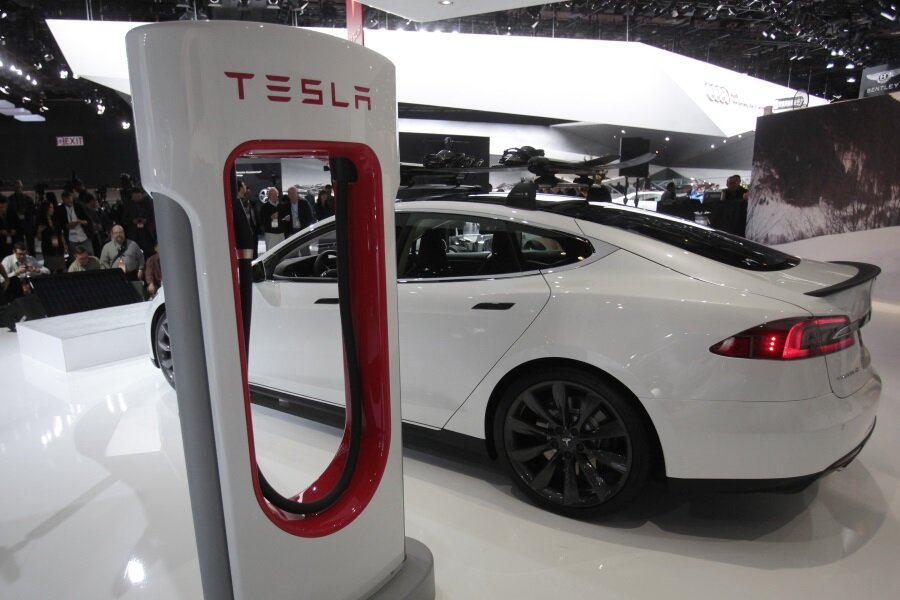Driver blows past Tesla's mileage rating, cruising 452 miles on one charge
Loading...
“Hypermiling,” the practice of driving a car in the most fuel-efficient manner possible, has been popular in circles of eco- and budget-conscious drivers for years.
In 2013, two hypermilers set a Guinness World Record for fuel efficiency by averaging 78 miles per gallon in a diesel-powered Volkswagen Passat. The Passat was estimated at 43 miles per gallon on highways, but the drivers used special techniques such as letting momentum carry them up hills to nearly double that efficiency.
This week, a Danish man showed that the same is true of electric cars: they’re generally rated to travel a certain number of miles in between charges, but that number can be extended with a little planning and driving technique.
Bjørn Nyland drove his Tesla Model S P85D sedan for 452.8 miles, nearly double the estimated range of 253 miles, beating the previous Model S range record of 423.5 miles, set in 2012.
Mr. Nyland and a friend started their drive at a Supercharger, one of several hundred stations scattered across Europe at which Tesla allows Model S owners to charge their cars for free. Nyland chose a route that was mostly flat, since elevation changes can eat into fuel efficiency (think about how much harder a car’s engine has to work to push the vehicle up a hill). Then he and his friend took turns behind the wheel, averaging about 25 miles per hour, for the next 18 and a half hours.
Hypermiling isn’t a particularly white-knuckle experience. The Model S’s slow speed maximized its efficiency, allowing Nyland to travel more than 450 miles before needing to recharge again. He avoided using the car’s stereo or air conditioning, since those systems draw energy from the battery, leaving less juice for the motor. Nyland uploaded the highlights of his trip to YouTube, but it’s mostly footage of the car driving slowly down very flat, smooth, straight roads in suburban Denmark.
Drivers can use hypermiling techniques to squeeze more fuel efficiency out of their cars, even if they don’t own a Tesla. One of the most important considerations is speed – driving at the lower end of the speed limit on the highway will dramatically increase miles-per-gallon, since it minimizes wind resistance and drag. Another is planning ahead. By looking far ahead of your vehicle, you can ease off the gas and coast to a stop rather than slamming on the brakes. Hypermilers also advocate avoiding jackrabbit starts and accelerating up hills – instead, accelerate gently and let momentum carry you over elevation changes.








